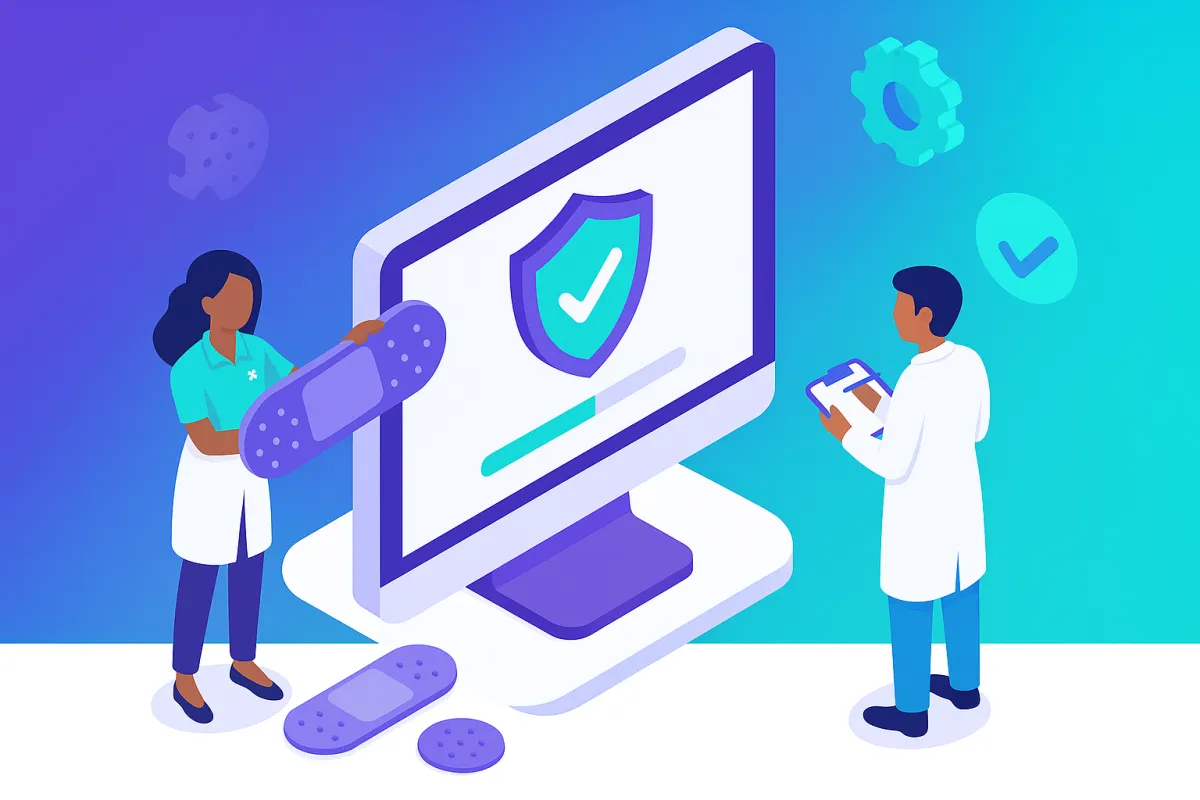
Patch Management: Like Vaccinating Your Computers Against Bugs
Table of Contents
What Vaccines and Patches Have in Common
Patch Management in Practice: What It Should Look Like
You Wouldn’t Skip Vaccines in Your Clinic or Lab—So Why Skip Them For Your Computers?
Just like vaccines protect people from disease, patch management protects your systems from vulnerabilities. It’s the routine but critical process of applying updates (a.k.a. “patches”) to your software and systems to fix security holes, bugs, or performance issues.
Let’s break it down using a comparison that makes sense in your world.
What Vaccines and Patches Have in Common
Vaccines are designed to help the body recognize and fight off threats before they can cause harm.
Patches do the same thing for your IT systems:
They seal up weak spots that attackers could exploit.
They boost immunity by strengthening system defenses.
And when widely applied, they protect the whole network, not just one device.
Whether it’s Windows, your electronic medical records (EMR), lab instrumentation software, or cloud tools, if it connects to your environment, it needs to stay patched.
What Happens Without Them?
Imagine skipping vaccines and hoping no one gets sick. Now imagine:
Unpatched computers open to ransomware or phishing attacks.
Outdated lab devices with known firmware vulnerabilities.
Critical healthcare data at risk because of a 3-month-old software bug.
That’s the digital equivalent of ignoring an infectious disease outbreak.

Patch Management in Practice: What It Should Look Like
Here’s how you can treat patching like your digital vaccination program:
1. Have a Schedule
Just like routine immunizations, patches should be regular. Set a patch cadence—weekly or monthly—and stick to it.
2. Know What Needs Coverage
Map your systems: servers, workstations, lab devices, cloud tools, and even endpoints like printers or tablets.
3. Test Before You Roll Out
Some vaccines cause reactions—so you monitor first. Similarly, test patches in a safe environment to avoid unintended system issues.
4. Track and Report
You’d track vaccine records—do the same with patch logs. This is especially critical for HIPAA, SOC 2, and other compliance audits.
5. Automate When Possible
Automated patching ensures consistency and speed, and helps protect systems even outside working hours.
Who’s Responsible for “Digital Immunity”?
In healthcare and research settings, everyone benefits—but IT is on the front line. That’s where having a specialized partner matters.
At Xyntris, we work with clinics, research teams, and biotech startups to implement secure, automated patch management tailored for regulatory environments. We make sure your systems stay protected—without disrupting your science or patient care.
Don’t Let a Known Bug Become Your Next Breach
Patch management may not feel urgent—until it’s too late. But just like with vaccines, prevention is everything.
Want to make sure your systems are fully protected? Let’s help you build a safer, stronger IT foundation—one patch at a time.


